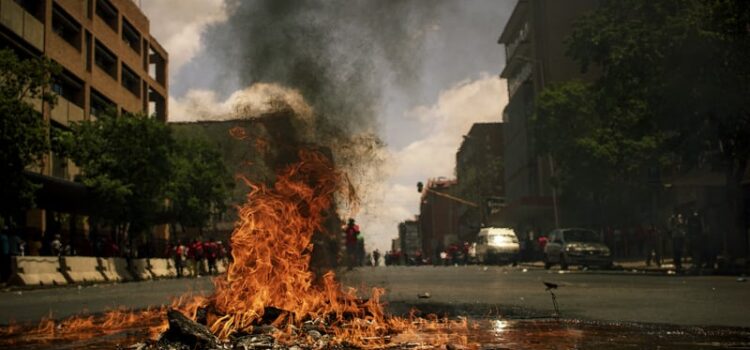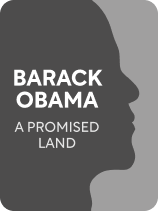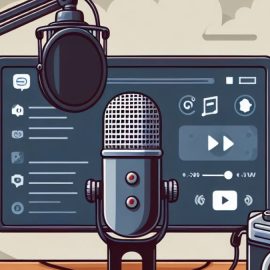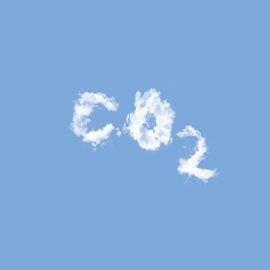

This article is an excerpt from the Shortform book guide to "A Promised Land" by Barack Obama. Shortform has the world's best summaries and analyses of books you should be reading.
Like this article? Sign up for a free trial here .
What was Libya’s role in the Arab Spring movement? How was the U.S. involved in what was going on in Libya?
In Libya, the Arab Spring movement became violent when Muammer Gaddafi ordered forces to fight against civilians. The U.S. and others interfered and helped end Gaddafi’s reign.
Read more about Libya, the Arab Spring movement, and U.S. involvement.
The Strike Against Libya in the Arab Spring
As the protests and unrest spread throughout the Middle East, regimes began to take more repressive, violent approaches toward them. In Libya, leader Muammar Gaddafi ordered his security forces to launch brutal actions against civilian protesters. This solidified Libya as having one of the most intense responses to the Arab Spring movement.
Gaddafi had long been an international pariah, infamous for violent repression domestically and state sponsorship of terrorism abroad. In a short matter of weeks in early 2011, much of Libya had descended into open civil war, with pro- and anti-government forces battling for control of the streets.
Gaddafi launched a campaign of unrestrained terror against his own civilian population, as anti-government forces took control in the city of Benghazi. Pro-Gaddafi forces began to converge on the city in March 2011, with Gadaffi promising to slaughter the inhabitants once they arrived. It was a humanitarian disaster in the making—and the international community began to press the Obama administration to intervene militarily.
The Costs of Military Intervention
Despite his clear sympathies with the forces resisting Gadaffi and his horror at the grisly fate that was surely awaiting Benghazi, Obama had strong reservations about committing U.S. troops.
The U.S. was already embroiled in two wars that had been going on for nearly a decade. Throwing the country into a third conflict was politically risky, would endanger American lives, and potentially put the U.S. on the hook for more military interventions around the world. After all, if the U.S. committed troops to stop a massacre in Libya, how could it decline to do so anywhere else in the world? Obama knew he could not sign off on an open-ended commitment by the United States to protect people around the world from their own governments. Moreover, war was a messy and ugly solution to any problem. Military conflicts, he’d learned, did not solve problems—they only created new ones, usually with unforeseeable consequences. This was how he saw Libya and the Arab Spring.
Still, international pressure continued to grow for military action. Top voices in the administration were split on the question. Secretary of State Hillary Clinton and UN Ambassador Susan Rice favored intervention, while Secretary of Defense Robert Gates, Joint Chiefs Chairman Mike Mullen, Vice President Joe Biden, and White House Chief of Staff Bill Daly were opposed.
It was one of the most difficult decisions of Obama’s presidency. He knew the risks of intervention—but also knew that tens of thousands of people could be slaughtered if he did nothing.
Building the International Coalition
The president made the decision that the United States would intervene to prevent Gaddafi’s destruction of Benghazi. But, in a break from the unilateral militarism of the Bush administration, Obama sought to build an international coalition to topple the Libyan dictator. In working with UK Prime Minister David Cameron and French President Nicolas Sarközy (both of whom had already publicly voiced support for military action in Libya) as well as representatives from the Arab League, Obama crafted a strategy to defeat Gaddafi, rescue Benghazi, and keep direct American involvement at a minimum.
The U.S. would destroy the Libyan air defenses, enabling British and French fighter jets to strike at Gaddafi’s ground forces, while the Arab League would provide logistical support. The British and French would also bear the cost of rebuilding after the end of hostilities. This plan of action promised to limit U.S. involvement in direct conflict and insulate the administration against political attacks that it was embroiling the country in yet another foreign conflict.
On March 17, 2011 the UN Security Council approved the use of military force to protect Libyan civilians.
Mission Success in Libya Arab Spring
The mission proved to be a success. By the end of March, Gaddafi’s forces were largely defeated. Obama’s commitment to internationalism had paid off: There were no American casualties, the intervention had come at a minimal financial cost to the U.S., and tens of thousands of Libyan civilians had been saved from certain death.
Despite the clear success of the mission, however, Obama was astonished to find congressional Republicans still hurling partisan attacks at his administration’s handling of Libya. They argued that Obama had done too much; that he had done too little; that he had been too hasty; that he’d waited too long; and that he hadn’t sought congressional approval under the War Powers Act (a legal procedure they’d happily ignored during the Bush years).
The hypocritical and bad-faith attacks were another confirmation to the president that politics no longer stopped at the water’s edge—everything was fair game in partisan warfare.

———End of Preview———
Like what you just read? Read the rest of the world's best book summary and analysis of Barack Obama's "A Promised Land" at Shortform .
Here's what you'll find in our full A Promised Land summary :
- How Barack Obama went from relative obscurity to the first Black president
- What principles guided his political leadership style
- Why Obama retained an unshakable faith in the potential and promise of America






